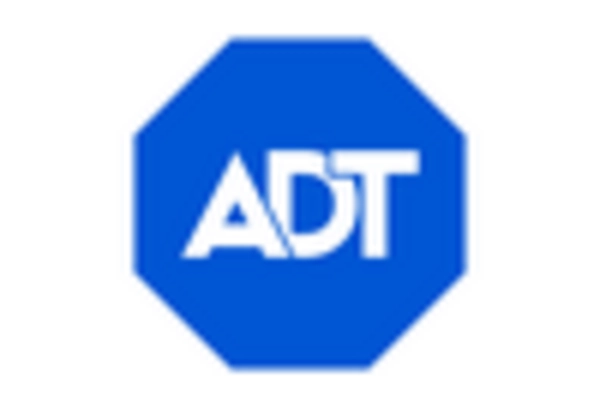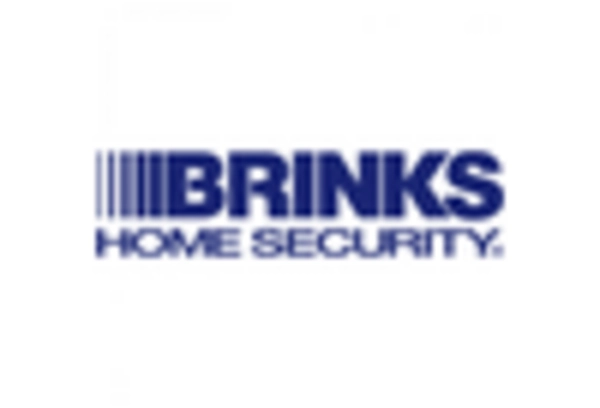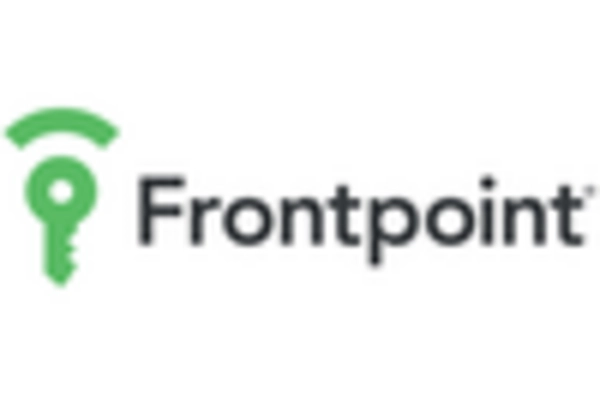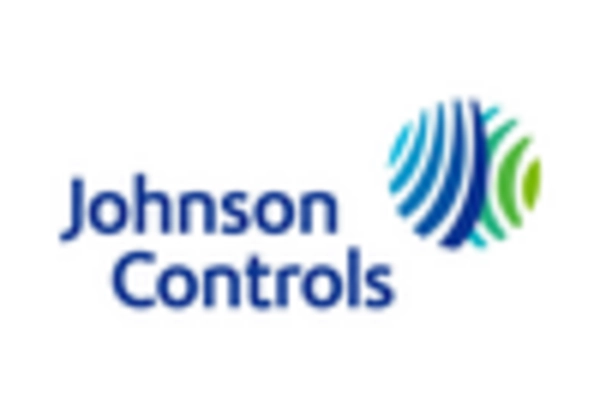The burglar alarm market in the US is characterized by a dynamic competitive landscape, driven by technological advancements and increasing consumer demand for security solutions. Key players such as ADT Inc. (US), Honeywell International Inc. (US), and Vivint Smart Home, Inc. (US) are at the forefront, each adopting distinct strategies to enhance their market positioning. ADT Inc. (US) focuses on innovation through the integration of smart home technologies, while Honeywell International Inc. (US) emphasizes its legacy in security systems, leveraging its extensive R&D capabilities to introduce cutting-edge products. Vivint Smart Home, Inc. (US) is strategically positioned in the smart home segment, offering comprehensive solutions that combine security with home automation, thereby appealing to tech-savvy consumers. Collectively, these strategies contribute to a competitive environment that is increasingly centered around technological differentiation and customer-centric solutions.
In terms of business tactics, companies are localizing manufacturing and optimizing supply chains to enhance operational efficiency. The market structure appears moderately fragmented, with several players vying for market share. However, the influence of major companies is substantial, as they set industry standards and drive innovation. This competitive structure fosters an environment where smaller firms can thrive by focusing on niche markets or specialized services, while larger entities leverage their resources for broader market penetration.
In October 2025, ADT Inc. (US) announced a partnership with a leading tech firm to develop AI-driven security solutions. This strategic move is likely to enhance ADT's product offerings, allowing for more sophisticated threat detection and response capabilities. By integrating AI, ADT aims to not only improve customer satisfaction but also to position itself as a leader in the evolving landscape of smart security solutions.
In September 2025, Honeywell International Inc. (US) launched a new line of environmentally sustainable security products, reflecting a growing trend towards sustainability in the industry. This initiative not only aligns with consumer preferences for eco-friendly solutions but also positions Honeywell as a forward-thinking company committed to reducing its environmental footprint. Such actions may enhance brand loyalty and attract a broader customer base concerned with sustainability.
In August 2025, Vivint Smart Home, Inc. (US) expanded its service offerings by acquiring a regional security firm, thereby increasing its market presence and customer reach. This acquisition is strategically significant as it allows Vivint to tap into new customer segments and enhance its service portfolio, further solidifying its position in the competitive landscape of smart home security.
As of November 2025, the competitive trends in the burglar alarm market are increasingly defined by digitalization, AI integration, and sustainability. Strategic alliances are becoming more prevalent, as companies recognize the value of collaboration in enhancing technological capabilities and market reach. Looking ahead, competitive differentiation is likely to evolve from traditional price-based competition to a focus on innovation, technology integration, and supply chain reliability. This shift suggests that companies that prioritize these aspects will be better positioned to capture market share and meet the evolving demands of consumers.
















Leave a Comment